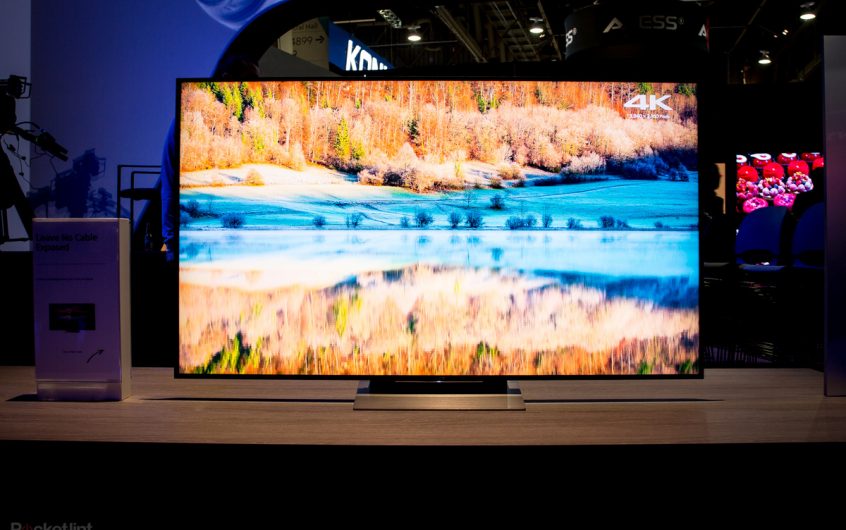What you Should Know about HDR and HDR Plus
The television experience has been evolving and getting better and smarter over time. Up to date, we have reached an all-time high in terms of ranges of choices, accessibility, as well as the luxury to be picky about minute details even.
What is HDR?
HDR is the latest addition to the already vast landscape of TV terminologyThis one, however, is something that you should look out for. HDR is the abbreviation of High Dynamic Range. The purpose of HDR TV is to make whatever you are watching more realistic and true to life. The picture is far clearer, and the colors are better. Tones, hues, and shades can be discerned far more efficiently. An HDR TV has a much more comprehensive color palette than a regular TV. Regular television screens have a resolution of 709. They do not have the ability to portray pictures in the way the human eyes see them. In terms of HDR, that kind of a natural portrayal is the whole point.
There are many aspects f watching TV that can be improved upon with HDR. For example, lines and writing become less fuzzy and pixelated; muted tones do not blend together anymore making it difficult to tell apart details and sometimes even large objects.
What is HDR Plus?
Over the past couple of years, the term HDR Plus has been a frequent term that has been circulating the television community of manufacturers and enthusiasts as well. HDR stands for High Dynamic Range, and HDR Plus is a highly enhanced version of it. The whole deal about an HDR Plus TV is that the colors are more vibrant and the contact is much higher. That means that whites appear clearer and the shades of black are darker which creates a greater contrast between the two. Bequality comes with other benefits as well which you might not have thought about before. For example, you will be able to see the transitions of the colors of a flame instead of a white blob, or the shades of blue of the ocean that other screens cannot show you. In movies with dark color schemes, you will be able to discern different objects a lot better instead of seeing an almost completely black screen. SThere are a few different types of HDR, however, and that is something to look into.
In any case, HDR makes a difference especially for the TV enthusiasts who want to get the full potential of their TV screen and watch films and series to the fullest. Now that we have established what HDR and HDR Plus mean, there is another question that arises.
Which TV is Compatible with HDR?
Not every TV is compatible with HDR content. Others claim that they are HDR but if they do not also have the UHD Premium certification then you will have only some of the benefits of the HDR content, but such TV screens are not able to offer you the complete HDR experience. That means that if you want the best HDR watching, then you need to look out for the certification as well. While the system of the UHD Premium might not be perfect, it is generally safer to purchase a UHD Premium TV.
What Factors make a TV HDR?
There are two factors make a TV HDR. One is the contrast performance, and the other is how many colors the screen can display.
A good TV picture depends strongly on the quality of the contrast and it also a critical factor in what makes a screen HDR. The contrast is essentially the differentiation between the light and the dark colors and the more significant the difference between the two, the bigger the contrast.
When n comes to contrast, there are two factors that we should consider. One is the peak brightness, meaning how bright the screen can become. That is measured in a unit called ”nits, ” and one level of intensity is one nit. If the TV screen can reach a certain number of nits, then it is labeled as an HDR TV.
The opposite measurement is the level of black that shows how dark the screen can get. How dark it can get is also measured in nits. The difference between these two components determines the contrast ratio.
Colour is the second essential component of what makes a TV labeled as HDR. The screen has to be able to process the so-called deep color, or 10-bit, which includes more than a billion different colors. We could make a comparison to the Blu-ray which uses 8-bit color, and that is about 16 million of various colors. The reason why colors and the ability to process them plays such a large part is that subtle shading and better gradation take a picture look a lot more real.
Although a TV does do not need to be able to display all of those billion colors, it is essential that it can take all of the information and process it and show an image based on that information. There is a vast number of things that can be said about colors in that department.
Will Everything You Watch be HDR if you Have the Right TV?
Unfortunately, things are not that simple as of yet. Not all content is created equal as not all sources are compatible with an HDR screen. In order to watch HDR television both, the device and source of the content have to be HDR and compatible. Big television brands are an excellent source of such material. For those who want to start watching in HDR, one option is to by an Ultra HD Blu-Ray or to stream HDR content from big entertainment companies. Either way, HDR is the best experience in terms of television you can get today.
As the industry of tech advancements is progressing, television will only be getting better and better. While it can be difficult to keep up, the latest improvements are often worth the time and the splurge as they offer something entirely new.




